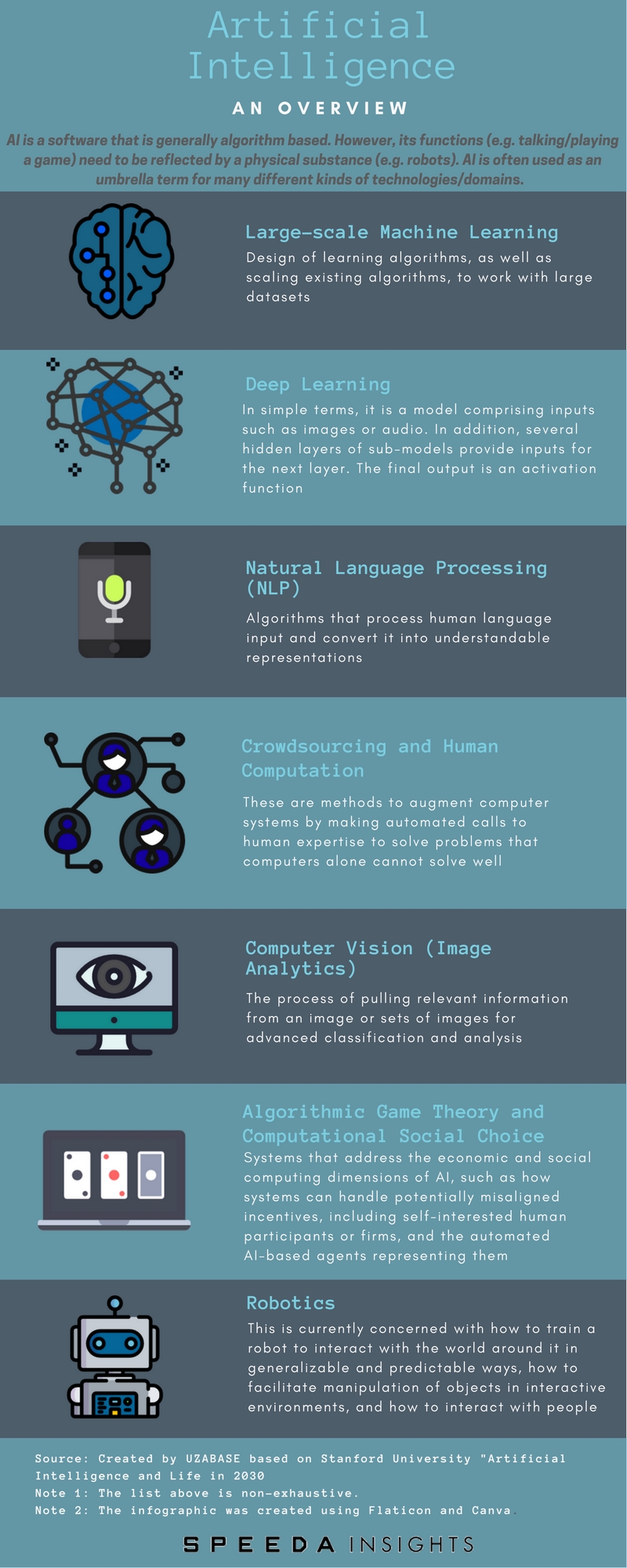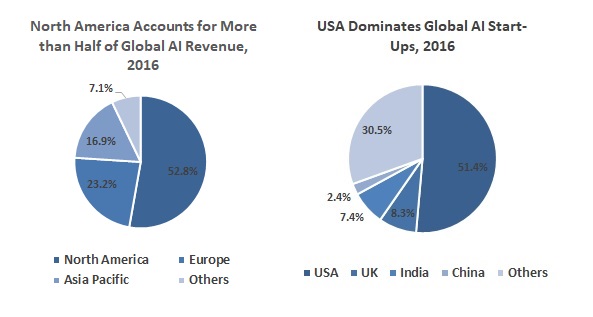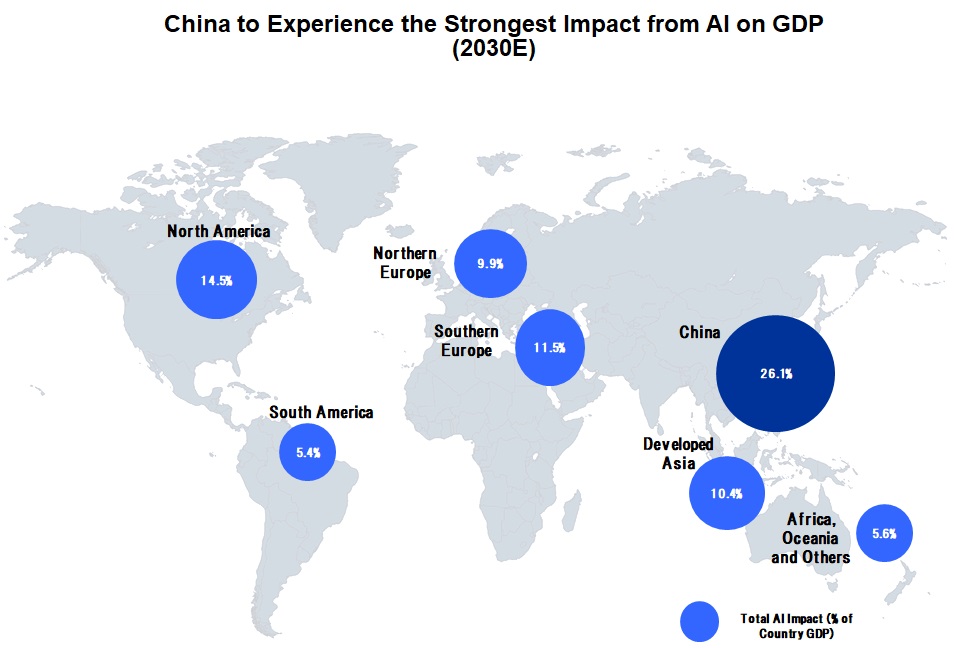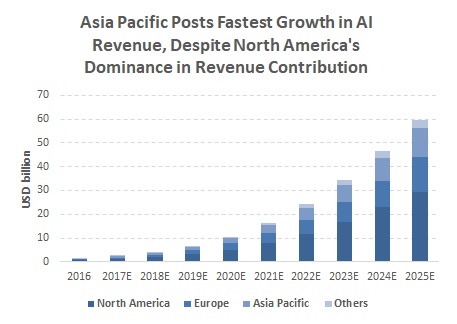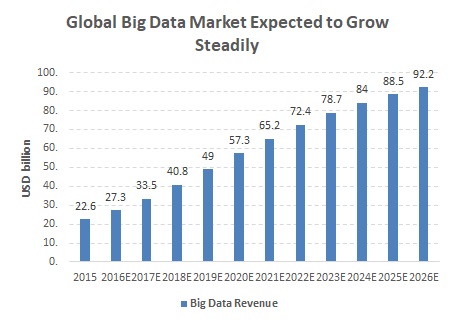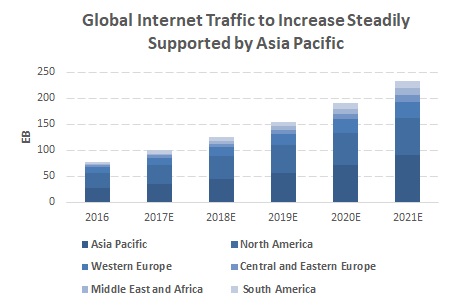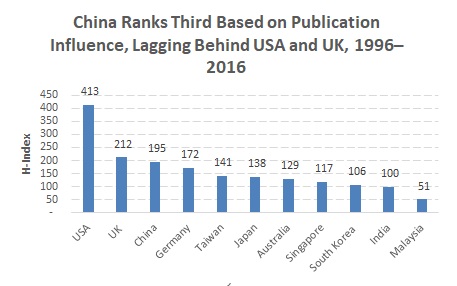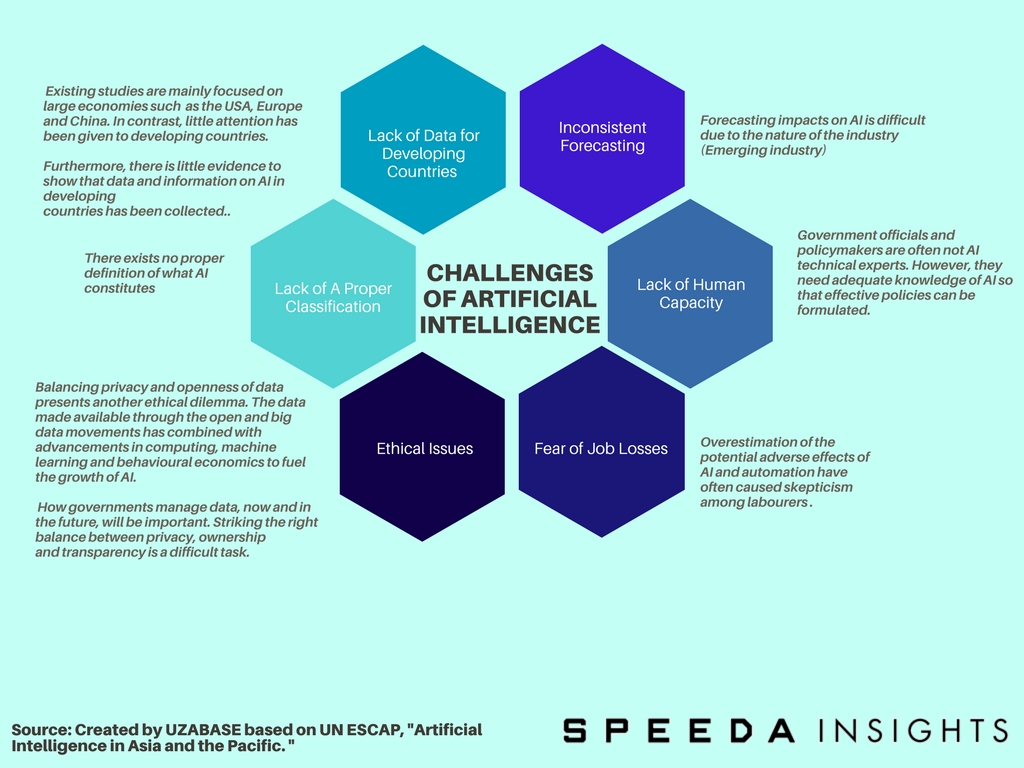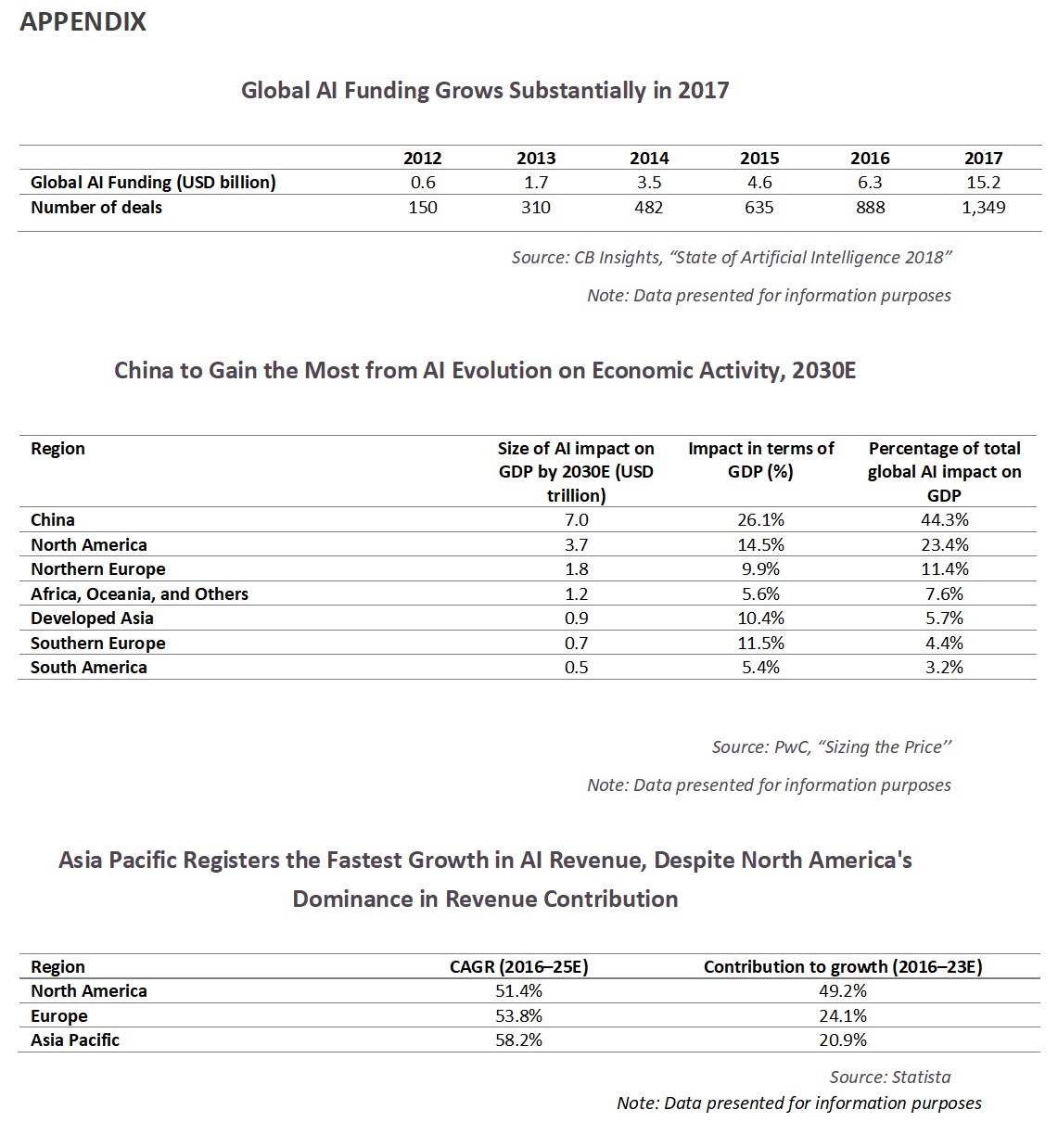Artificial Intelligence: Will Asia Pacific Outsmart the Rest of the World?
|
As we enter the Fourth Industrial Revolution, the implications of major technological breakthroughs are nothing new. However, many technologies are competing with each other to lead the global revolution, with artificial intelligence (AI) at the forefront. Industry experts valued the global AI industry at a mere USD 1.4 billion in 2016 (0.2% of IT spend). |
|
Today, despite being at a nascent stage, the industry has global attention from investors due to its considerable potential. The global AI industry is therefore projected to grow at a significant CAGR of 51.7% over 2016–25E to USD 59.7 billion in 2025E (approximately 7% of global IT spend by 2025E), as per Statista. |
|
While North America should contribute significantly to this growth (currently the dominant market, with a share of 52.8% of global AI revenue as of 2016), the Asia Pacific region (16.9%) is expected to grow the fastest. The faster growth is likely to be driven mainly by Asian investments being realised towards the end of the forecast period, as seen in countries such as China, the region’s largest AI market. In fact, as per CB Insights, China overtook the USA in terms of global funding in 2017, accounting for approximately 48% of global equity funding (11.3% in 2016) versus the USA’s 38%. Strong investments from China are likely to propel the Asian market forward, with PricewaterhouseCoopers expecting the global GDP impact of AI at USD 15.8 trillion (an approximately 14% increase in global GDP) by 2030E. The impact is expected to be generated mostly from Asia — approximately 50% of the total impact. Furthermore, the Asian market is also supported by growth in big data and an increasing number of research papers on AI. Hence, while at present the Asian market lags behind global peers such as North America, it is likely to surpass them. This revolution should be led by a few emerging companies in the Asia Pacific region that we identify based on our analysis of equity deals, in the areas of healthcare, e-commerce, and auto technology. However, they might face challenges in the form of ethical and social concerns surrounding job losses and moral obligations that could constrain growth. |
|
Artificial Intelligence at a Glance |
|
Entering the Fourth Industrial Revolution, the world is aware of the many implications of the major technological breakthroughs that are part of it. Many technologies are competing with each other to lead this latest revolution, with artificial intelligence (AI) at the forefront. The present report focuses on the emerging trend of AI and its possible implications. There exists no universally agreed upon definition of AI. The OECD and the United Nations Conference on Trade and Development (UNCTAD) define AI as the ability of machines and systems to acquire and apply knowledge and to show intelligent behaviour. The following infographic summarises some of the technologies that fall under AI. |
|
|
|
Similar to other technologies, AI will continue its evolution as we progress from one innovation to the next. As per UBS (a global financial services company), AI’s evolution fits into three stages: artificial narrow intelligence (ANI), artificial general intelligence (AGI), and artificial superintelligence (ASI). ANI is often referred to as the infant stage, where systems can manage only one function. AGI, on the other hand, covers more than one field, such as problem-solving, reasoning, and abstract thinking. ASI is the final stage, where industry experts expect AI to surpass human intelligence across all fields. At present, AI is still in the ANI stage. The following infographic illustrates two of the three stages and differentiates them. |
|
|
|
Currently, AI has various uses. Initially, it was largely restricted to powering machine intelligence in the industrial automation and robotics industry. However, it has gradually expanded into other industries. Hence, as technological advancement continues, alongside closer collaboration between humans and machines, AI has the potential to change the fundamental structure of industries. |
|
North America Leads Global AI Market, Supported by Historical Investments; Asia Pacific to Overtake, Driven by Increasing Equity Investments |
|
AI has just begun to emerge as a standalone industry. According to a new report by Tractica (a US-based market intelligence firm), the global AI industry was valued at USD 1.4 billion in 2016 (latest data available), accounting for a mere 0.2% of global IT spend, as per Statista. In terms of geographies, North America accounted for 52.8% of global AI revenue, followed by Europe (23.2%) and the Asia Pacific region (16.9%). North America’s dominance in the global AI industry is supported by the USA’s global deal share (approximately 50% of global deals in 2017), while the other regions accounted for the balance and continue to lead global equity deals. Historical investments have led to a large number of global start-ups and technological developments in North America (the latter reflected in the number of patent applications). |
|
According to UBS, the global AI industry saw more than 2,000 start-ups in 2016 (latest data available), and the USA accounted for 51.4% of them, followed by the UK (8.3%) and India (7.4%). Furthermore, according to the Wuzhen Index: Annual Report on Global Artificial Intelligence, as of 2016 (latest available), the USA had filed a total of 26,981 patent applications, accounting for 34.8% of global AI patents. China ranked second in terms of global AI patents (accounting for 20.3% of patents) in 2016, followed closely by Japan (18.8%). In terms of sub-fields, 32.5% of global AI patents in 2016 were for intelligent robots, followed by speech recognition (20.8%) and neural networks (20.7%). |
|
|
|
Source Graph 1: Statista |
|
Source Graph 2: UBS, “How artificial intelligence will transform Asia” |
|
Note: Latest data available is for 2016 |
|
|
|
Source: Wuzhen Institute |
|
Note: Latest available data is for 2016 |
|
Despite being a late entrant into the AI market, many Asian corporates and governments have in recent years realised the importance of AI and its various implications, and have begun to accelerate efforts to narrow the gap between the Asia Pacific region and other leading global peers. According to Statista, the global AI industry is projected to grow at an impressive CAGR of 51.7% over 2016–25E to USD 59.7 billion in 2025E (approximately 7% of global IT spend by 2025E). In terms of regions, North America is expected to contribute 49.2% of total growth over the period, and the Asia Pacific region 20.9%. However, the Asia Pacific region is expected to grow at a CAGR of 58.2% over the same period to USD 12.4 billion in 2025E, registering a faster growth rate than other regions, such as North America (51.4%) and Europe (53.8%). This faster growth in the Asia Pacific region can be attributed to investments in AI being realised later towards the end of the forecast period, as seen in countries such as China. |
|
In fact, in 2017, AI funding saw exponential growth globally due to large-scale equity funding from Chinese investors. For the first time, Chinese equity investments surpassed the USA’s, which had historically supported the growth of AI funding globally. Despite accounting for merely about 9% of total global deals in 2017, China accounted for approximately 48% of total equity funding in AI during 2017 (versus 11.3% of global funding in 2016), followed by the USA (38%) and others. Consequently, as per CB Insights (a global market intelligence platform), global AI funding more than doubled in 2017 to USD 15.2 billion, following growth at a strong CAGR of 82.9% over 2012–16 to USD 6.3 billion in 2016. Furthermore, the number of global deals grew at a healthy CAGR of 55.2% over 2012–17 to 1,349 deals in 2017. As a result, the average deal size grew steadily at a CAGR of 23.1% over 2012–17 to USD 11.3 million in 2017. |
|
According to PricewaterhouseCoopers (PwC), the impact of AI on global GDP is expected at USD 15.8 trillion (an approximately 14% increase in global GDP) by 2030E. The impact is expected to be generated mostly from Asia (approximately 50% of the total impact). China should account for approximately 44% of the global GDP impact in 2030E and 90% of the total Asian impact, while North America should account for approximately 23% of the total global impact. This indicates that the Asia Pacific region could overtake North America in terms of global AI market revenue, as returns from the investments are realised over time. |
|
Faster Growth in China’s AI Industry to Propel Asia Pacific Market Growth |
|
|
|
Source: CB Insights, “State of Artificial Intelligence 2018” |
|
|
|
Source: CB Insights, “State of Artificial Intelligence 2018” |
|
|
|
Source: CB Insights, “State of Artificial Intelligence 2018” |
|
|
|
Source: PwC, “Sizing the Price’’ |
|
|
|
Source: Statista |
|
Increase in Data Usage and AI-Related Talent Underpins Asian Market Growth |
|
Apart from the large-scale investments discussed above, our analysis also identified two other key factors that have supported AI development in the Asian market (the following list is not exhaustive). |
|
• Strong Data Growth in the Asia Pacific Market to Aid AI Adoption |
|
Big data refers to extremely large datasets (both structured and unstructured data) that are analysed computationally to reveal patterns, trends, and other information relating to human behaviour. AI technology relies heavily on data availability, and this makes growth in big data a key driver of the AI industry. As per Statista, the global big data market is projected to grow at a CAGR of 13.6% over 2015–26E (latest available data) to USD 92.2 billion in 2026E. |
|
This growth is likely to be driven by people’s desire to stay connected and their need to efficiently multitask (as reflected in the surge of global internet traffic, for instance). As per Cisco (a USA-based multinational technology conglomerate), global internet traffic is expected to grow at a CAGR of 24.0% over 2016–21E to 278.0 exabytes (EB) per month. Growth in global internet traffic over the period is expected to be driven by the Asia Pacific region (contribution to growth: 40.9%); the region’s total traffic is expected to grow at a CAGR of 27.3% to 90.2 EB per month in 2021E. This should be followed by growth in the North American market (contribution to growth: 27.6%) at a CAGR of 19.9% over the same period to 71.3 EB per month in 2021E. The large amount of data generated over the period should benefit AI engines, which are based on big data technology. |
|
One Asian success story is Baidu’s (CHN) “Deep Speech 2”, a voice system that recognises English and Mandarin speech and that in some cases was a better listener than most humans. The technology takes advantage of deep learning tools and recognises words, based on its learning from hundreds of hours’ worth of transcribed audio. |
|
|
|
Source: Statista |
|
Note: Latest available data for actuals is 2015 |
|
|
|
Source: Statista |
|
• Increased Research and Education to Bolster Emerging Talent Pool |
|
According to Zinnov (a global management consulting firm), in 2015 (latest data available), AI-related talent was significantly higher in the USA (65,000) than in large Asian markets such as China (20,000) and India (18,000). However, the landscape is projected to change, with the combined AI-based talent in China and India (85,000 in China and 70,000 in India) expected to surpass the USA’s (110,000) by 2025E, as per the same source. This trend should be driven by increased education and academic research in AI-based technologies, as described below. |
|
Over the past few years, China has been making rapid progress in AI research for the Asia Pacific market. In October 2016, as per a White House report, the number of academic research papers published in China in the fields of deep neural networks and deep learning surpassed the number of American academic research papers. As per SCImago Journal & Country Rank (SJR), China accumulated a total of 102,593 scholar documents on AI for the Asia Pacific region over 1996–2016, i.e. 18.5% of total documents. However, China lagged far behind the USA in terms of citations (excluding self-citations), as illustrated further below. Similarly, during the same period, China ranked third (behind the USA and the UK) in the H-Index — a rank of publication influence as measured through scholar productivity and the impact of citations. However, as with its Asian peers, the Chinese market lacks quality, and this is likely to be a major challenge. |
|
|
|
Source: SJR |
|
Note: Latest data available is for 2016 |
|
|
|
Source: SJR |
|
Note: Latest data available is for 2016 |
|
AI Companies Emerge Across Asia Pacific, Despite Industry Challenges |
|
AI has the potential to disrupt existing business models by creating entirely new markets, and this is often understood and accepted globally. However, AI also helps industry experts think differently about their own industries — a positive in many respects, as it encourages innovation and creativity. While at present Asia lags behind global peers such as North America in terms of AI adoption and market revenue, our analysis concludes that Asia shows considerable growth potential for AI adoption, with China likely to take the lead. This is of course subject to some industry challenges that potential start-ups could face (as discussed below). As per CB Insights, based on analysis of equity deals, the following were identified as a few of the hottest areas of AI investment globally: |
|
|
|
Source: Estimated by UZABASE based on CB Insights’ “State of Artificial Intelligence 2018” |
|
Healthcare Applications More Industry-Focused; Transportation Applications More Consumer-Focused |
|
|
|
|
|
Source: Compiled by UZABASE based on various materials. |
|
|
|
|




